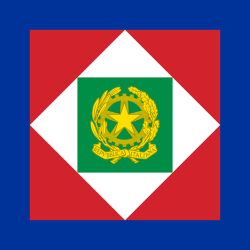
The presidential standard or presidential flag is the flag that is used in many countries as a symbol of the head of state or president. In some countries it may be for exclusive use of the president or only raised where the president is present. An equivalent in a monarchy is a royal standard, and in an empire, an imperial standard.